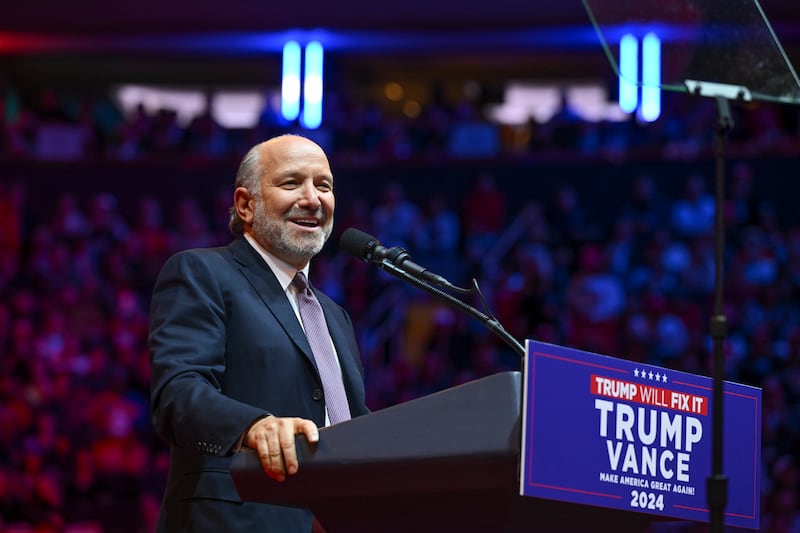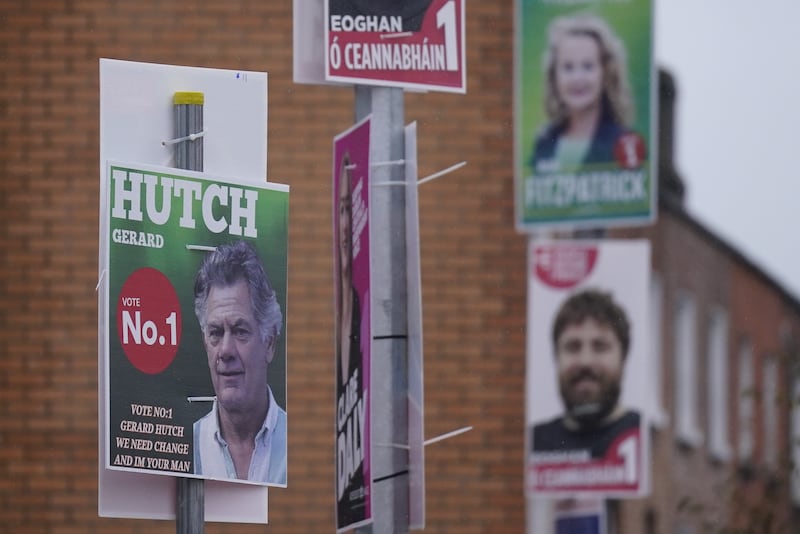There were warnings of the risks facing the economy provided to the Cabinet on Wednesday, notably from the election of Donald Trump as US president.
That this followed a couple of weeks of party political promises and an election row over who can be trusted with the exchequer finances is surely noteworthy too in terms of the timing of all this.
But how do we actually calibrate the risk of Donald Trump back in the White House?
1. The scenarios
We know what Trump has threated to do and can guess at the wider consequences. His election campaign included a threat to impose blanket tariffs of 60 per cent on goods coming from China and 10-20 per cent on goods coming from elsewhere.
The rationale is to protect US industry and encourage American companies to invest “at home”. It is based on what might be called economic nationalism.
There is a strong group of people around Trump in favour of this tariff agenda, including an investment banker, Howard Lutnick, who was appointed as commerce secretary this week with the additional responsibility of trade.
He has commented on Ireland’s trade surplus with the US on X and in TV interviews. Robert Lighthizer, a senior adviser to Trump in this area and central to his election tariff promises has yet to be announced for a senior position and whether or not he gets one may be an indicator of how hard Trump wants to go on tariffs.
[ Big Tech may not get everything it wants from TrumpOpens in new window ]
Underlining the contradictions in the Trump agenda, there are reports that the president-elect wants to avoid undermining the financial markets and the gains made since his victory.
A strongly pro-tariff agenda might do just that. So we wait to see if Trump goes all in on tariffs or takes a more nuanced approach.
Those making the case for tariffs argue that the cash raised could be used to cut taxes on business and consumers, but it is unclear what way Trump will move.

Another risk of tariffs is that they would push up inflation in the US and increase costs to consumers. Walmart, the giant retailer, joined others this week when it cautioned that tariffs would be likely to mean some prices would go up. The American National Retail Federation dubbed them “a tax on American families”.
The respected Peterson Institute, a US think tank, calculates that Trump’s tariff agenda implemented in full could add $2,600 (€2,471) to the annual shopping bill of a typical US household.
The final constraint will be lobbying from big business and the impact on Trump and on Congress. The president has some powers to impose tariffs by executive order but might need congressional approval for more far-reaching blanket tariff plans.
There is legal debate on this issue in the US and it could yet end up before the courts. The Republican control of Congress could ease Trump’s passage here, but it does not guarantee that he will get it all his own way.
How Trump balances these conflicting agendas will be vital for Ireland.

Irish companies are already preparing for impact of Trump’s tariffs
2. Ireland’s exposure - the issues
It is clear that Ireland is in the sights of Trump and some of his senior team because of the large trade surplus in goods which this country has with the US – meaning we export much more to the US than we import.
In the first nine months of this year alone, the latest Central Statistics Office (CSO) figures show that the Irish surplus with the US amounted to an enormous €35 billion.
In the make-America-great-again (Maga) agenda, this is a transfer of wealth to Ireland. Particularly sensitive are huge exports of pharmaceuticals and chemicals made by US multinational subsidiaries in Ireland and exported back to the US.
Ireland is a big player here, accounting for 45 per cent of European Union exports of pharma and medicines to the US.
While the vast bulk of the research and development work on these projects is undertaken in the US and the drugs are sold in the American market, these companies arrange their supply chains and intellectual property so that they pay the vast bulk of their tax in Ireland and not the US.
Ireland also exports food, drink and other manufactured goods to the US and these would all be vulnerable to blanket tariffs.
Speaking to The Irish Times business podcast this week, Carol Lynch, partner in charge of customs and trade at BDO, said that Irish companies were already scenario planning on the potential consequences, though she said what would actually happen remained unclear.
She pointed out that under a World Trade Organisation (WTO) agreement on pharmaceuticals, the US has committed not to put tariffs on in this area as it is vital for public health.
However, Trump is no fan of the WTO and the US has ensured that its appellate body, which adjudicates on rows, is not operating, undermining much of the WTO process. In other words Trump could choose to push ahead anyhow, though it would push up already-expensive drug prices in the short term.
If tariffs are imposed, then companies exporting to the US market have to look at their supply chains, and decide what to do. Do they have profit margins that can absorb a tariff? Can they cut their own costs either of raw materials or distribution? How much gets passed on to the final consumer? Or is selling into the US likely to be viable at all?
There are also other tax measures open to the Trump administration to change the incentives for pharma companies manufacturing and paying tax here and selling back to the US – these include Trump’s promise of a cut in the main US corporation tax rate from 21 per cent to 15 per cent, but also less far-reaching measures which could also make a difference.

3. Ireland’s exposure – the numbers
There are so many uncertainties that it is impossible to calibrate the risks with any accuracy. In terms of the corporation tax outlook there are also other pluses and minuses from the Organisation for Economic Co-operation and Development (OECD) international tax reform process, itself facing uncertainties now and the fallout were parts of it not go ahead.
In its recent medium-term outlook document, the Department of Finance modelled two scenarios to illustrate the risks of a fall-off in corporation tax, which now accounts for 27 per cent of total tax revenue. In one scenario, corporate tax receipts stay at their 2024 level (excluding the impact of Apple receipts).
This leads to significantly lower surpluses on the exchequer finances in the years ahead, eating up some of the room for manoeuvre built into the manifesto sums.
[ Trump success unlikely to mean ‘doomsday’ for Irish life sciences, says DeloitteOpens in new window ]
By 2028, the surplus on the general government balance (the EU borrowing measure) would be €6 billion, compared to the forecast €10 billion. This is before adding in commitments which emerge from a new programme for government.
In a second scenario, there is a large decline in corporate tax revenues, wiping out what the Department of Finance sees as the “windfall” element of these receipts and bringing receipts in this area back gradually to their 2020 levels of under €12 billion.
This opens up an enormous deficit and would blow manifesto plans out of the water. This is not a forecast, but it does show what is at stake.













